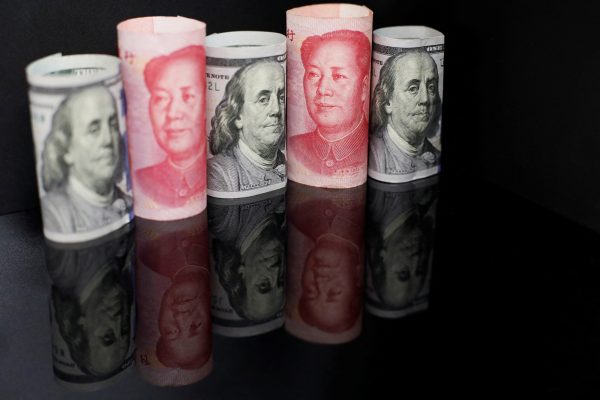China’s yuan firmed at a nearly 7:1 ratio versus the American dollar as the communist regime announced measures that marked a sharp change to its tough, three-year-old zero-COVID policy that has battered its economy and sparked historic protests.
On Wednesday, Dec. 7, the Chinese National Health Commission removed the most authoritarian quarantine requirements for people with no or mild symptoms of COVID-19, and loosened the nucleic acid testing regime, under which millions of people have been forced to wait in line for lengthy periods.
Instead of being sent to “fangcang” quarantine camps, those not suffering from severe symptoms can self-quarantine at home. Meanwhile, the NHC has called for lockdowns to target individual buildings or even floors, rather than entire communities as was required previously.
Beijing specifically banned the blockage of doors and fire escapes, something often done by zealous “zero-COVID” enforcers to keep people confined to their homes.
The announcement was the strongest sign so far that China is preparing its people to live with the disease, though analysts say the path to fully reopening the economy will be long and bumpy and not without risk.
Success
You are now signed up for our newsletter
Success
Check your email to complete sign up
However, investors were also digesting dismal data which showed China’s exports and imports shrank at their steepest pace in at least 2-1/2 years in November.
“I think the (COVID) measures were overshadowed by the plunge in exports,” said Rob Subbaraman, Asia head of global markets research at Nomura.
“China’s reopening will be bumpy in coming months and economic data will likely get worse before it gets better.”
The onshore yuan was last up 0.26% at 6.977 per dollar.

While the reopening is welcome news to the Chinese people, many netizens reported that their cities were still implementing various forms of epidemic control that amounted to lockdowns. For example, a resident in Urumqi, Xinjiang, reported on Dec. 2 how nucleic acid test were being required at inconvenient times for most of the city’s working population, effectively forcing them to stay home.
Analysts at SinoInsider, a political risk consultancy, also warn that the Chinese Communist Party’s attempts at re-opening will be subject to inefficiencies and even reversals as officials are liable to misinterpret the directives from Party Central.
“The Party’s brute-force, ‘dare to struggle’ approach to policy does not lend itself to careful administration, leading instead to confusion and engenders new risks as officials go to extremes or display incompetence in adhering to the new ‘political correctness,'” Larry Ong, senior analyst with SinoInsider, wrote in a Nov. 21 article for Vision Times.
Other observers have warned that reopening China during the flu season could lead to waves of severe COVID cases and deaths.
Dollar at standstill
The dollar was little changed on Wednesday after some of the biggest U.S. banks warned of an impending recession, as reported by Reuters.
Top bankers from JPMorgan Chase & Co, Bank of America and Goldman Sachs said overnight that the banks are bracing for a worsening economy next year as inflation and high interest rates cut into consumer demand.
The greenback was up 0.32% against the Japanese yen following a 0.16% gain on Tuesday. Yet the euro was flat against the dollar at $1.048, after falling 0.2% in the previous session.
Investors are weighing up the outlook for the U.S. dollar, which surged this year but has fallen in recent weeks on expectations that the Federal Reserve might soon pause its interest-rate hikes.
Some investors believe the recent drop has gone too far and that concerns about the global economy and further Fed rate hikes should boost the currency.
“We’ve been forecasting a recession in the U.S., the UK, the euro zone and Japan … It’s part of our baseline,” said Joseph Capurso, head of international and sustainable economics at Commonwealth Bank of Australia.
“(That) will provide more support to the U.S. dollar as a safe-haven currency.”
Against a basket of currencies, the U.S. dollar index was less than 0.1% higher at 105.55.
The British pound was up 0.13% to $1.215.
The Aussie was roughly flat at $0.6689 after data showed Australia’s economy slowed a little in the September quarter, a day after the country’s central bank signalled more rate hikes ahead to cool inflation.
Reuters contributed to this report.














